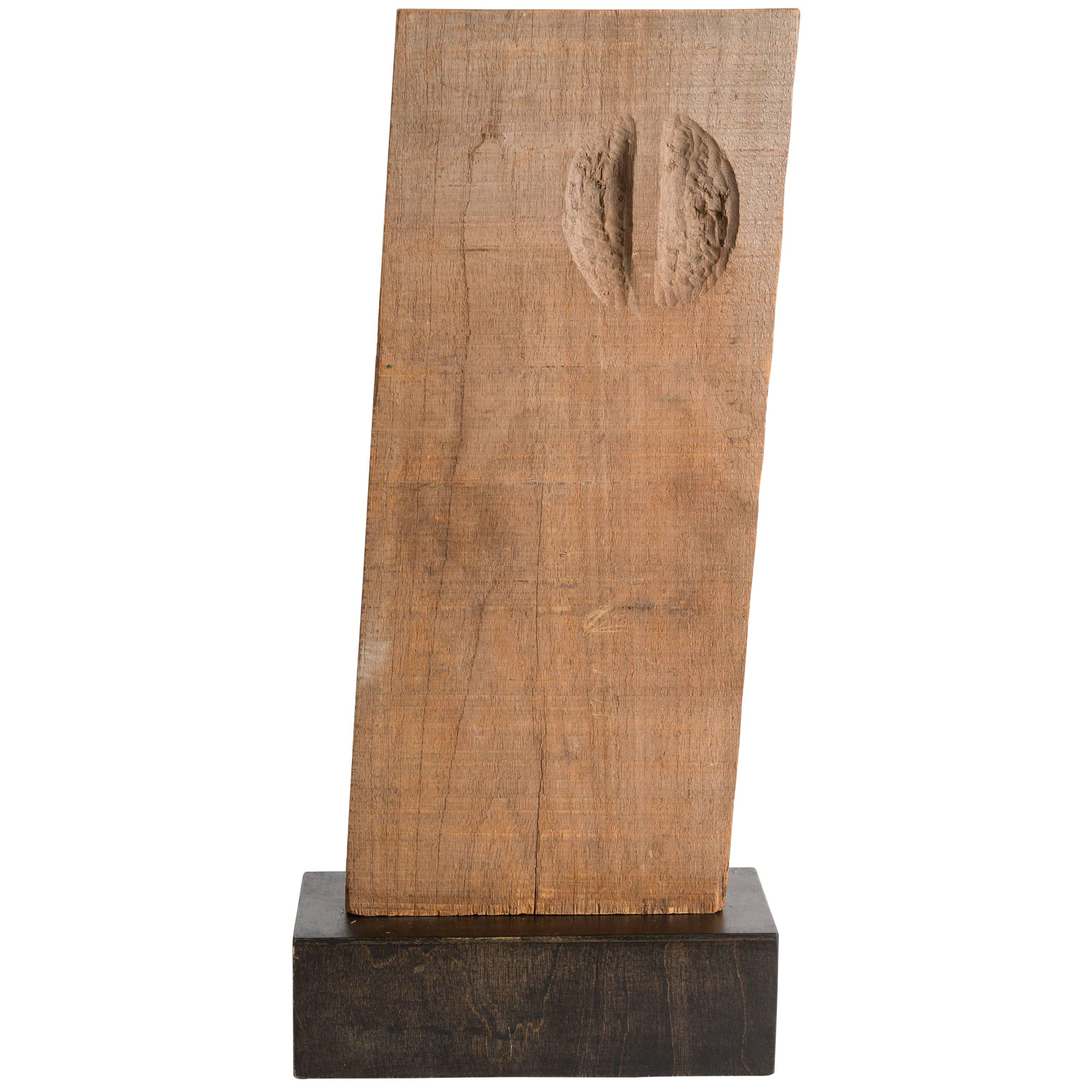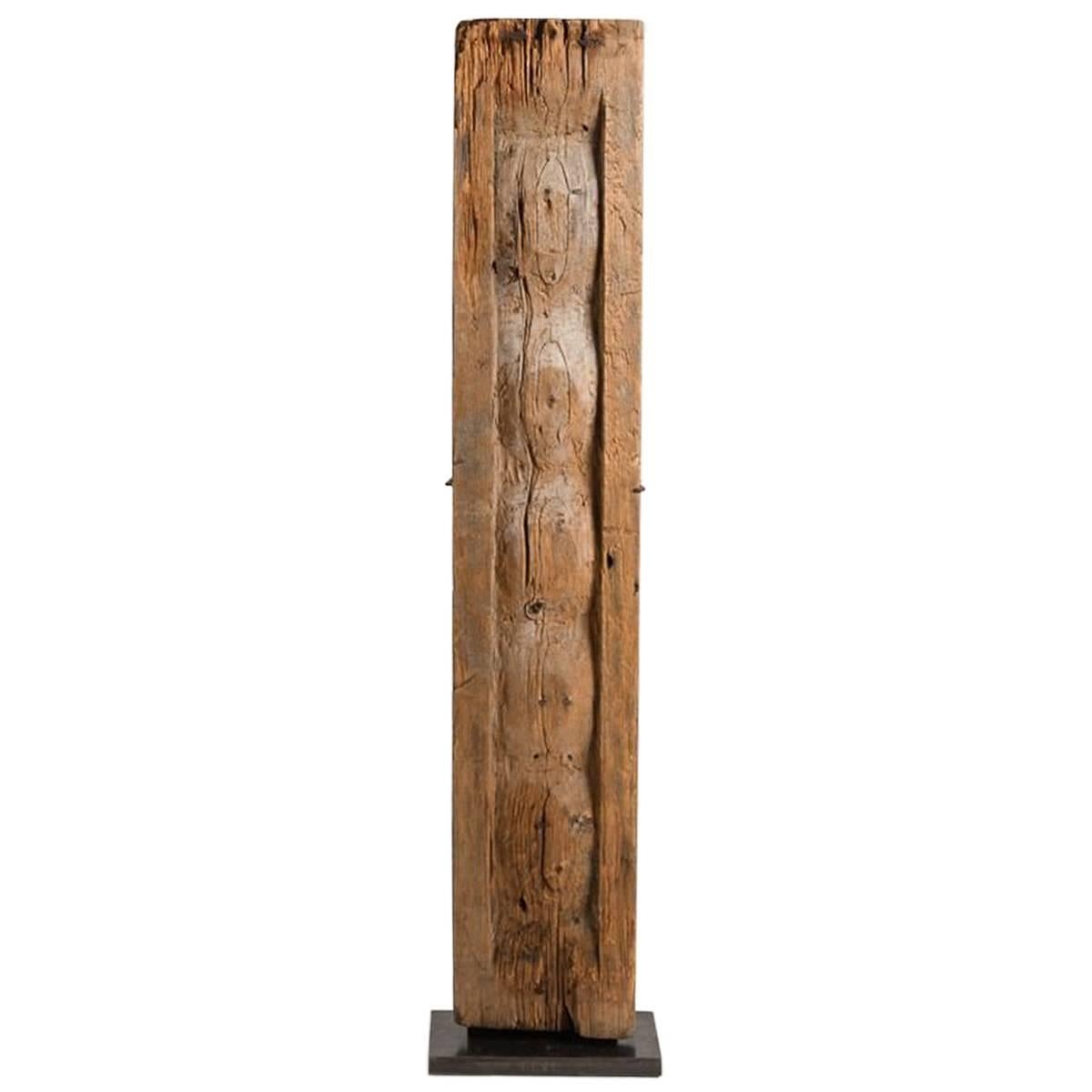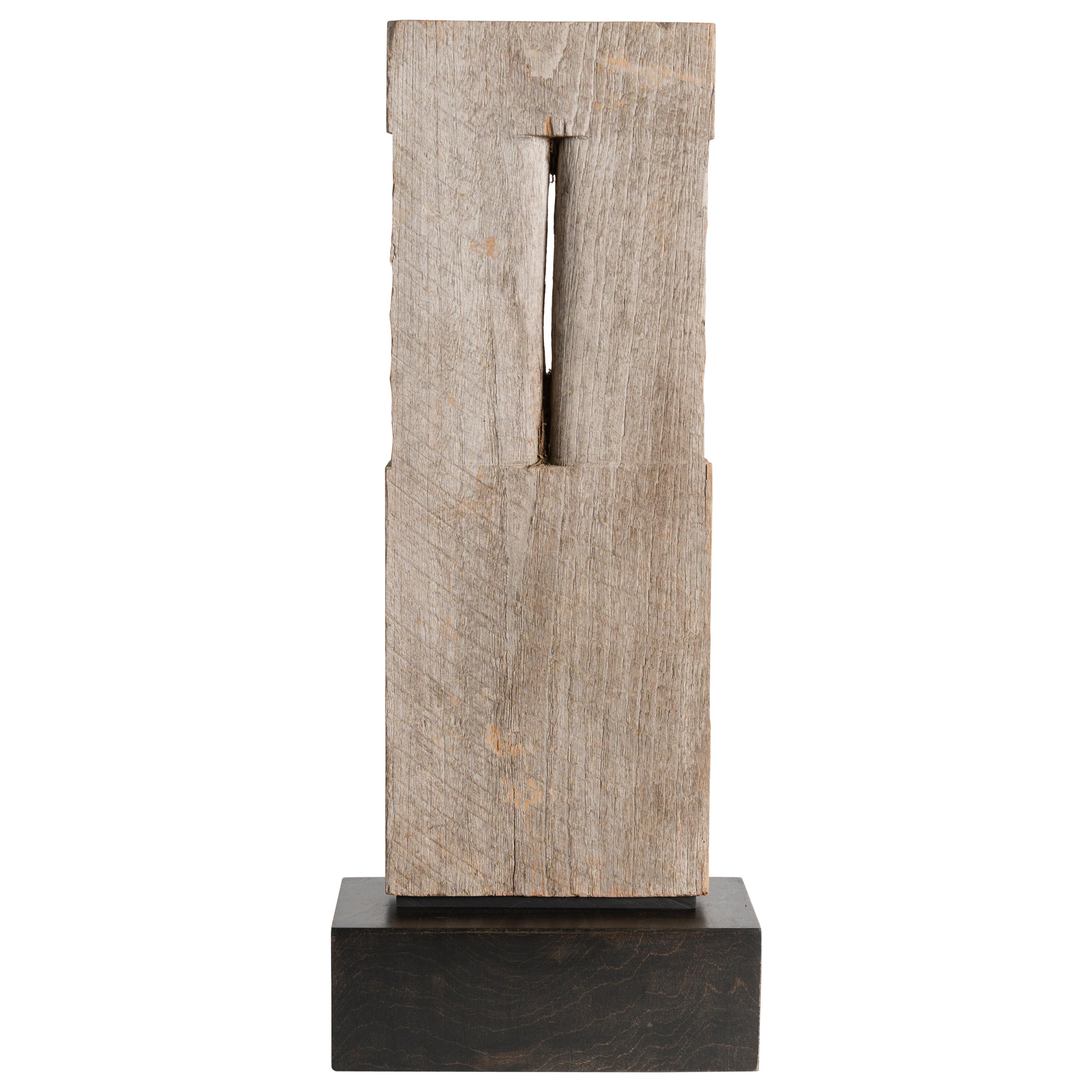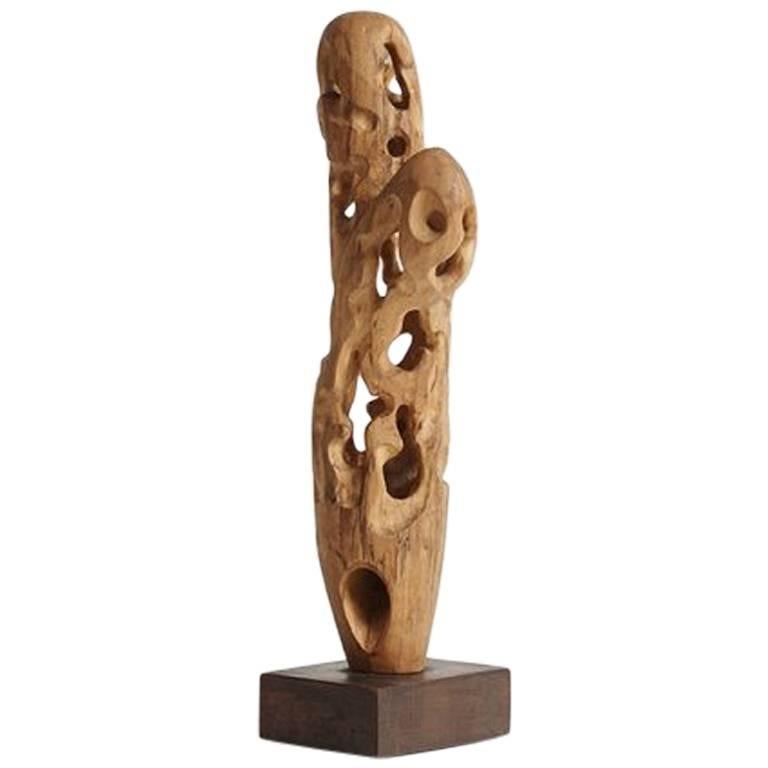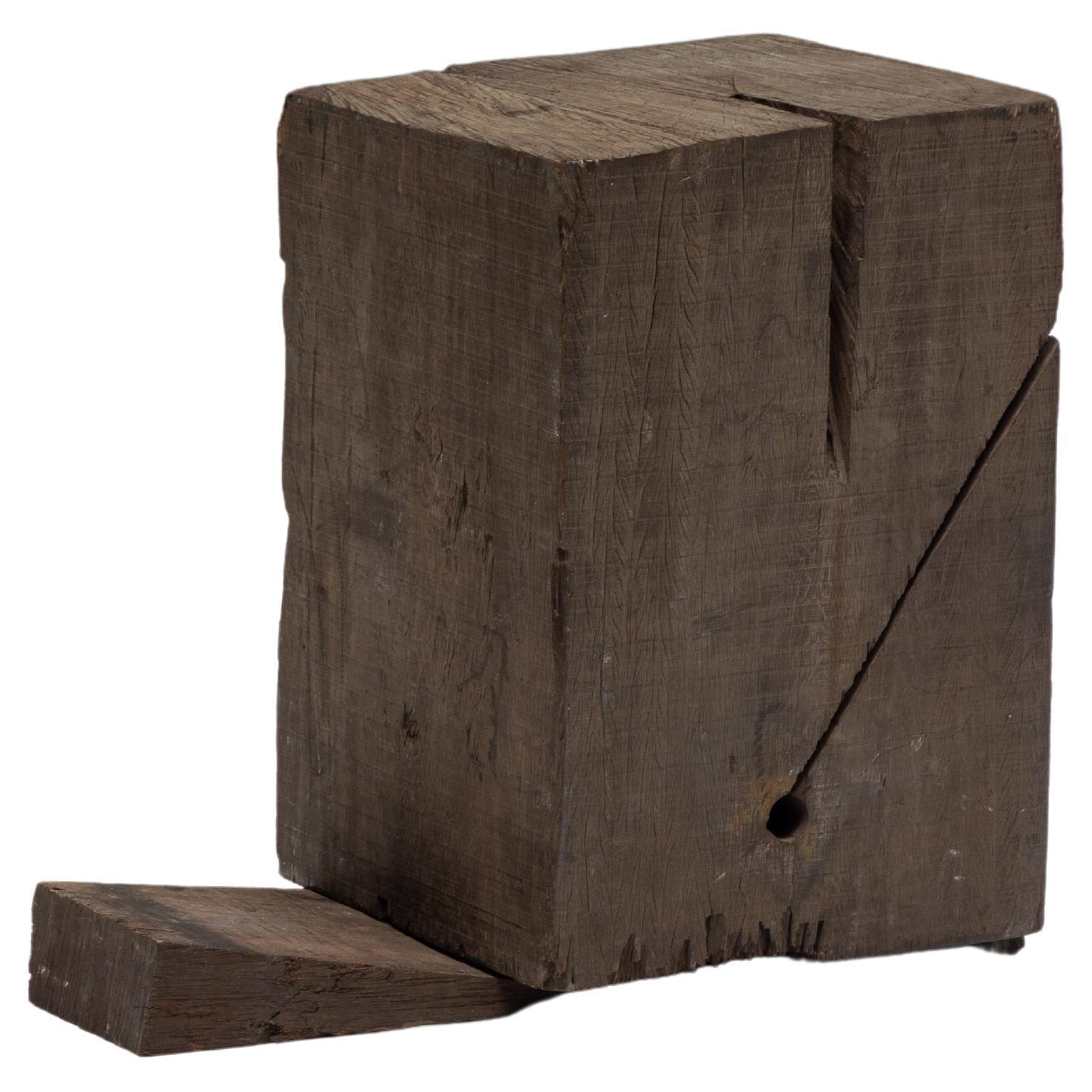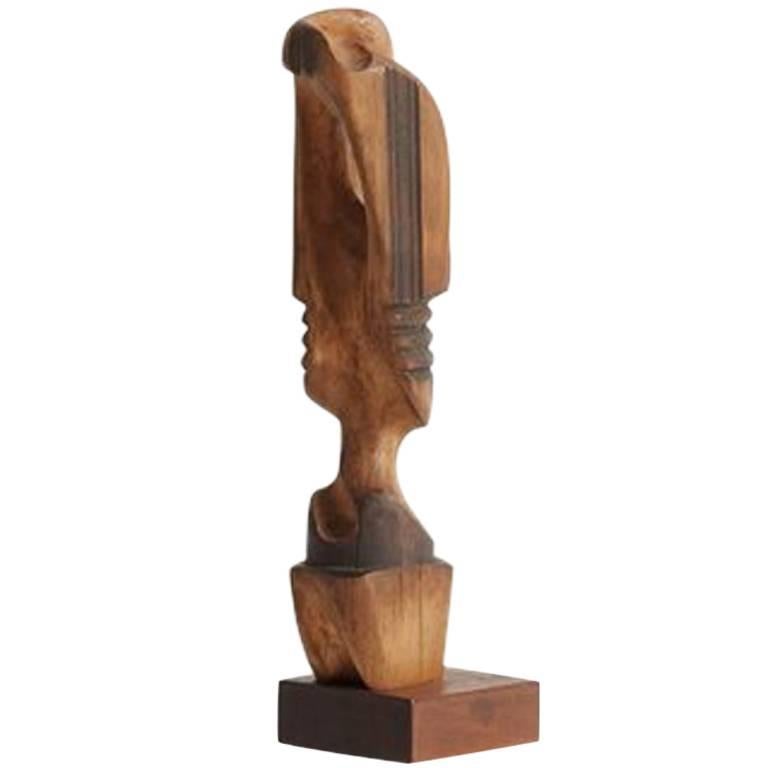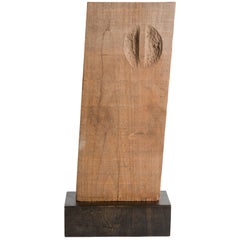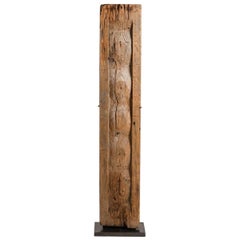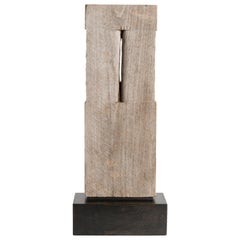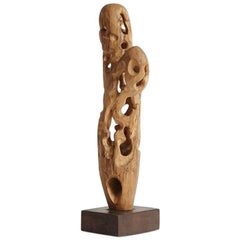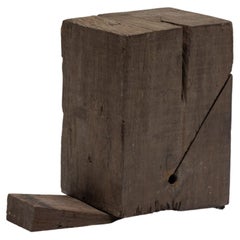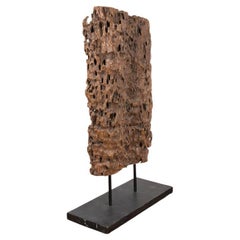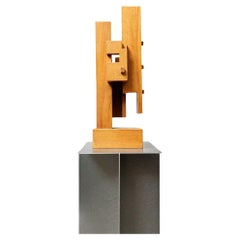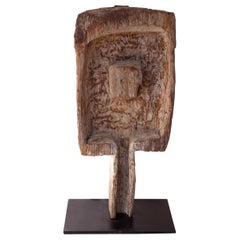Items Similar to Yongjin Han, Piece of Wood, Sculpture, United States, 1976
Want more images or videos?
Request additional images or videos from the seller
1 of 6
Yongjin Han, Piece of Wood, Sculpture, United States, 1976
$18,000
£13,576.65
€15,681.17
CA$25,219.24
A$28,042.35
CHF 14,680.67
MX$342,542.52
NOK 184,477.15
SEK 173,537.73
DKK 117,058.83
About the Item
Yongjin Han was born in Seoul, South Korea in 1934. After the Korean War—in which he fought, lying about his age in order to enlist—he was one of six students admitted to the sculpture program at the Seoul National University. At the time of his enrollment little of his native city remained intact; nonetheless, he had never felt more responsible to his work, firm in the conviction that artistic expression is every bit as essential to life and human nature as eating, drinking, or breathing.
One of Han’s teachers was Kim Chong Yung, a pioneer of Korean abstract sculpture, and by the time of his graduation he had adopted the abstraction that had seized both Europe and the United States several years before. . In 1967 he relocated to the USA, where he studied at Dartmouth and Columbia. Over the course of his long career the artist returned to Korea with frequency and made extended stays in Japan and Europe.
Trips to Korea signified something more than mere homesickness: Han’s work, though made largely in America, remained grounded in his rich cultural heritage. Korea rests on a bedrock of granite, and freestanding sculpture produced of the stone has for centuries demarcated sites of historical and religious significance. Han’s sculpture bridges this past with modernity. Richard A. Born, former Curator at the Smart Museum at the University of Chicago, has said that Han “brought Korea’s tradition of direct stone carving out of figuration into a refined, non-objective abstraction.”
For his part, Han put very little stock in designations; his focus, instead, was on the stone itself. His pieces explore a certain harmonization with nature. Han, when describing his work, said, "As stone has been around since the beginning of time, it has much to teach us if we care to slow down and listen." He believed that each stone has its own history, character, and energy and that his task was to draw out these inherently spiritual qualities. He described his process as a “dialogue” with his material: "The stone tells me it has an itch in a certain spot, so I scratch it—and we both feel better!"
Han worked alone and with manual tools, and the process is arduous. Carving stone this way takes time, and, what’s more, required great force—yet Han’s sculptures, even the monumental ones, are, as friend and fellow artist David Parker says, “all gentle grace and warmth” … [the sculptor] “engages with the stone as an equal—like wayfarers meeting on a path, Han and a stone spend time together and when they part, both are marked and changed forever.”
Yongjin Han's career spanned decades and continents, and included several prestigious large-scale public commissions. In Seoul his work can be found at the National Museum of Contemporary Art, the IE Young Museum of Contemporary Art, the Whanki Museum, the Ewha Woman’s University Museum, Posong High School, and the 88 Olympics Seonsu Village. His sculptures are held in a variety of public and private collections throughout the world, notably by the Herning Kunst Museum in Denmark; the Smart Museum of Art, University of Chicago; and the Sculpture Park at City Hall, Redding, CA.
- Creator:Yongjin Han (Artist)
- Dimensions:Height: 23.5 in (59.69 cm)Width: 9.5 in (24.13 cm)Depth: 3 in (7.62 cm)
- Materials and Techniques:
- Place of Origin:
- Period:
- Date of Manufacture:1976
- Condition:Wear consistent with age and use.
- Seller Location:New York, NY
- Reference Number:Seller: HANY 311stDibs: LU78138466013
About the Seller
5.0
Recognized Seller
These prestigious sellers are industry leaders and represent the highest echelon for item quality and design.
Established in 1974
1stDibs seller since 2003
208 sales on 1stDibs
Typical response time: 7 hours
Associations
The Art and Antique Dealers League of America20th Century SpecialistsAntiques Associations Members
- ShippingRetrieving quote...Shipping from: New York, NY
- Return Policy
Authenticity Guarantee
In the unlikely event there’s an issue with an item’s authenticity, contact us within 1 year for a full refund. DetailsMoney-Back Guarantee
If your item is not as described, is damaged in transit, or does not arrive, contact us within 7 days for a full refund. Details24-Hour Cancellation
You have a 24-hour grace period in which to reconsider your purchase, with no questions asked.Vetted Professional Sellers
Our world-class sellers must adhere to strict standards for service and quality, maintaining the integrity of our listings.Price-Match Guarantee
If you find that a seller listed the same item for a lower price elsewhere, we’ll match it.Trusted Global Delivery
Our best-in-class carrier network provides specialized shipping options worldwide, including custom delivery.More From This Seller
View AllYongjin Han, a Piece of Wood, Sculpture, United States, 1976
By Yongjin Han
Located in New York, NY
Yongjin Han was born in Seoul, South Korea in 1934. After the Korean War—in which he fought, lying about his age in order to enlist—he was one of six students admitted to the sculpture program at the Seoul National University. At the time of his enrollment little of his native city remained intact; nonetheless, he had never felt more responsible to his work, firm in the conviction that artistic expression is every bit as essential to life and human nature as eating, drinking, or breathing.
One of Han’s teachers was Kim Chong Yung, a pioneer of Korean abstract sculpture, and by the time of his graduation he had adopted the abstraction that had seized both Europe and the United States several years before. . In 1967 he relocated to the USA, where he studied at Dartmouth and Columbia. Over the course of his long career the artist returned to Korea with frequency and made extended stays in Japan and Europe.
Trips to Korea signified something more than mere homesickness: Han’s work, though made largely in America, remained grounded in his rich cultural heritage. Korea rests on a bedrock of granite, and freestanding sculpture produced of the stone has for centuries demarcated sites of historical and religious significance. Han’s sculpture bridges this past with modernity. Richard A. Born, former Curator at the Smart Museum at the University of Chicago, has said that Han “brought Korea’s tradition of direct stone carving out of figuration into a refined, non-objective abstraction.”
For his part, Han put very little stock in designations; his focus, instead, was on the stone itself. His pieces explore a certain harmonization with nature. Han, when describing his work, said, "As stone has been around since the beginning of time, it has much to teach us if we care to slow down and listen." He believed that each stone has its own history, character, and energy and that his task was to draw out these inherently spiritual qualities. He described his process as a “dialogue” with his material: "The stone tells me it has an itch in a certain spot, so I scratch it—and we both feel better!"
Han worked alone and with manual tools, and the process is arduous. Carving stone this way takes time, and, what’s more, required great force—yet Han’s sculptures, even the monumental ones, are, as friend and fellow artist David Parker...
Category
Vintage 1970s American Abstract Sculptures
Materials
Wood
Yongjin Han, a Piece of Wood, Sculpture, United States, 1976
By Yongjin Han
Located in New York, NY
Unique piece.
Sculpted in 1976, this is a rare piece for the famed sculptor Yongjin Han, who usually worked in stone. Nonetheless, it is a quintessential example of his serene com...
Category
Late 20th Century American Abstract Sculptures
Materials
Wood
Yongjin Han, a Piece of Wood, Sculpture, United States, circa 1985
By Yongjin Han
Located in New York, NY
Sculpted in 1985, this is a rare piece for the famed sculptor Yongjin Han, who usually worked in stone. Nonetheless, it is a quintessential example of his serene compositions.
Uni...
Category
Vintage 1980s American Abstract Sculptures
Materials
Wood
Mario Dal Fabbro, Wood Sculpture, United States, 1990
By Mario Dal Fabbro
Located in New York, NY
In this late work by Dal Fabbro, the viewer is reminded of a lone cactus in the desert. But closer inspection reveals expertly carved gaps in the wood, showing us the depths and dive...
Category
20th Century American Abstract Sculptures
Materials
Wood
Mario Dal Fabbro, Wood Sculpture, United States, C. 1983
By Mario Dal Fabbro
Located in New York, NY
In this sculptural study by dal Fabbro, the viewer's expectations are reversed. What may at first seem figural becomes abstract as one moves around the piece, revealing the artist's ...
Category
20th Century American Abstract Sculptures
Materials
Wood
Mario Dal Fabbro, Wood Sculpture, United States, 1981
By Mario Dal Fabbro
Located in New York, NY
One of the more figural of dal Fabbro's oeuvre, this sculpture conjures images of a bird perched on a branch, ready to take flight. In the artist's classic style, however, the carvin...
Category
20th Century American Abstract Sculptures
Materials
Wood
You May Also Like
Wooden Sculpture by Bernd Lohaus, Belgium, 1996
Located in Antwerp, BE
Wooden sculpture by German artist Bernd Lohaus showcased in his solo exhibition at Galerie Micheline Szwajcer in 1996 Antwerp. Lohaus, a luminary figure in Antwerp's avant-garde art ...
Category
1990s Belgian Abstract Sculptures
Materials
Wood
Wood Sculpture Crafted from Organic Molave Root, Philippines
Located in Round Top, TX
Organic molave root sculpture, hardwood from Philippines.
Molave is an indigenous species now protected by Philippine law making this a unique, speci...
Category
Late 20th Century Philippine Abstract Sculptures
Materials
Metal
Architectural 1980s Dutch Constructivist Solid Wood Sculpture, De Stijl
Located in AMSTERDAM, NL
This solid wood sculpture, commissioned by the city of The Hague, evokes architecture with its stacked geometric blocks reminiscent of a model for an apartment building. Created in t...
Category
20th Century Abstract Sculptures
Materials
Wood
$5,206 Sale Price
20% Off
Carved Teak Sculpture
Located in Pittsburgh, PA
This early 20th-century hand-carved teak sculpture has a gorgeous patina and wood grain, showing off its rich character. Set on a metal stand, it’s a timeless piece that blends rusti...
Category
Early 20th Century Rustic Abstract Sculptures
Materials
Iron
$1,780
Ricardo Santamaria, Wooden Sculpture, France, 1970
By Ricardo Santamaria
Located in Catonvielle, FR
Ricardo Santamaria (1920-2013), sculpture composed of an accumulation of foundry molds. The front part is articulated (hinge).
France, 1970.
Category
Vintage 1970s French Other Abstract Sculptures
Materials
Hardwood
Unusual Wooden Sculpture with Iron Stand
Located in Bridgehampton, NY
The sculpture is unique in its handmade quality and form.
Category
Mid-20th Century American Mid-Century Modern Natural Specimens
Materials
Iron
More Ways To Browse
Parker Vintage Furniture
Stone Age Tools
Vintage Tell City Furniture
Japanese Granite
Vintage Wayfarer
Set Design
Vintage Designer
1960s Retro Living Room Furniture
Used Wall Art
Wood Craft Furniture
Time And Style
Size Two
Vintage Wood Living Room Furniture
Vintage Carpet
Traditional Office Furniture
Seely Furniture
Used European Furniture
Scandanavian Furniture
